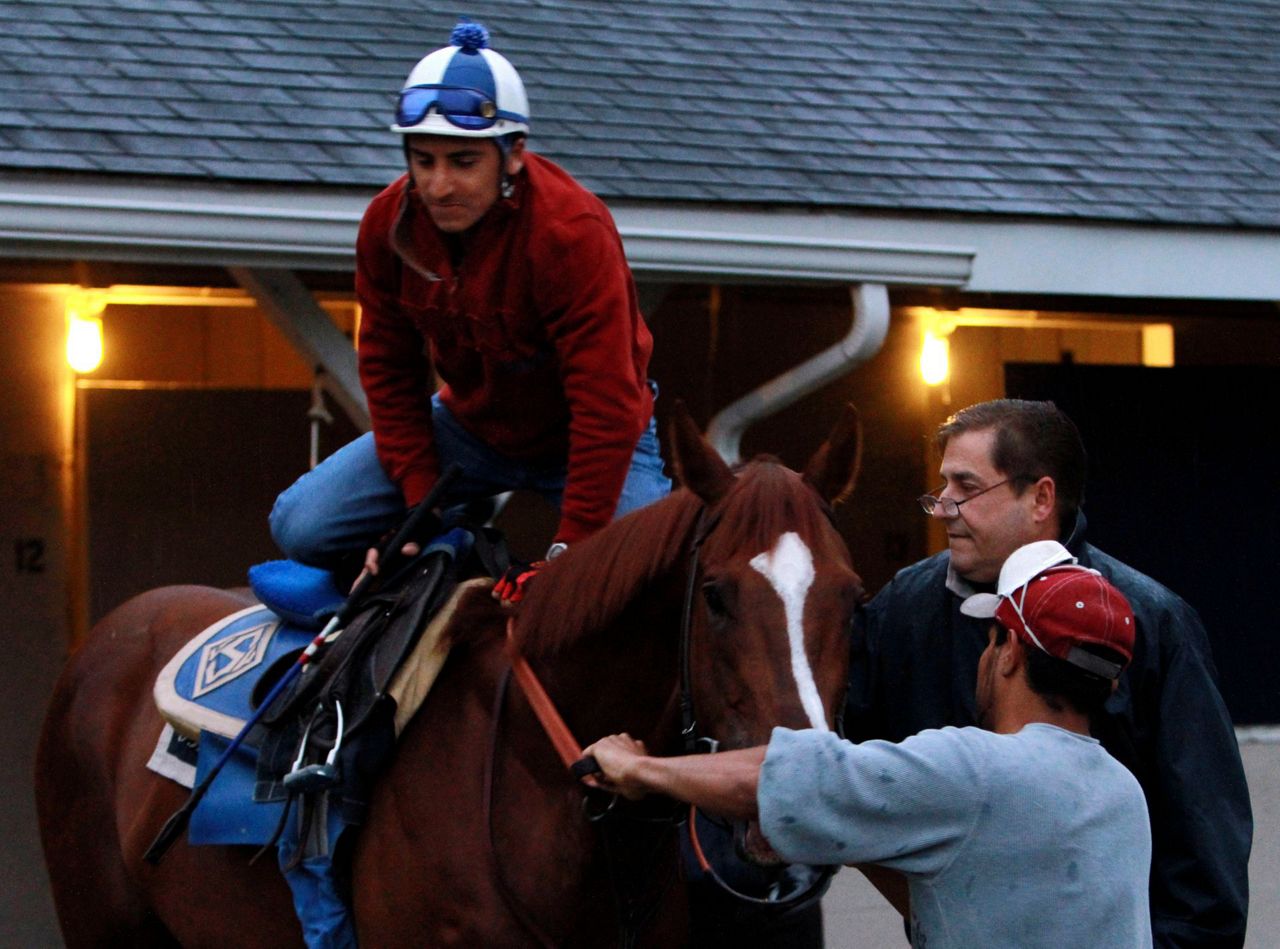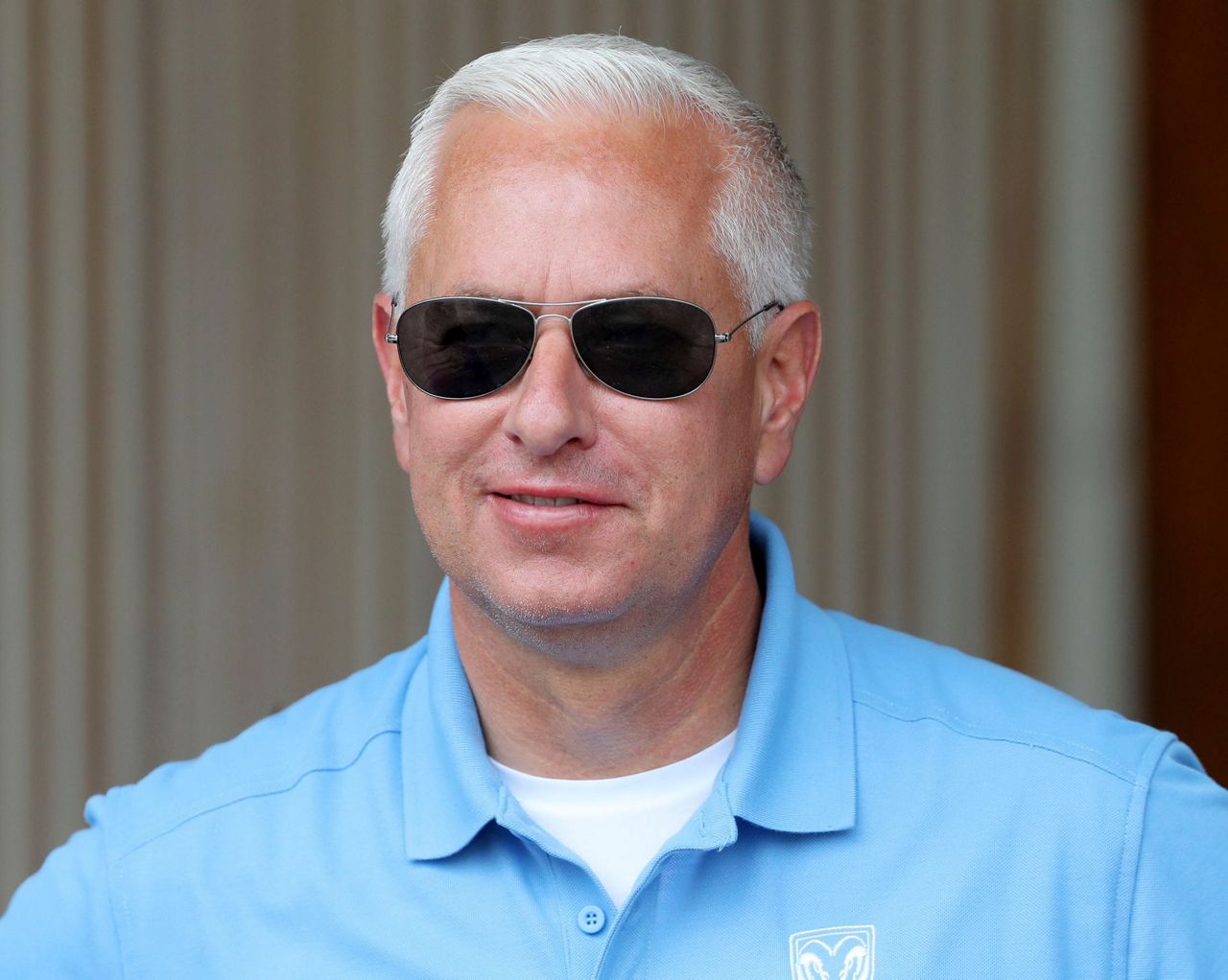LOUISVILLE, Ky. (AP) — The Kentucky Derby is steeped in tradition: a blanket of red roses to the winner, fancy hats worn by mint julep-sipping spectators and its first Saturday in May date on the calendar.
There's a major change coming to the 147th Derby.
It will be run for the first time this weekend without horses using the anti-bleeding drug Lasix as part of the sport’s plodding attempt to move toward the elimination of race-day medication.
The drug is already widely banned on race days in the rest of the world.
Lasix has long been the third-rail in North American racing, with people on both sides of the issue disagreeing about its use.
Formally known as furosemide, it’s given as a $20 injection about four hours before a race to prevent or reduce the severity of exercise-induced bleeding in the lungs. It also works as a diuretic that causes horses to urinate and lose 20 to 30 pounds of fluid, thus increasing their ability to run faster. Humans use Lasix to control blood pressure.
“I’ve never had a fan come up to me and say, ‘Geez, Lasix is bad,’” said California-based trainer John Sadler, who saddles Rock Your World in the Derby. “People want to go to the races and have fun and watch good horses run.”
Kiaran McLaughlin trained for 10 years in Dubai and achieved major success for Godolphin Racing without race-day medication. However, he was initially concerned about not having it.
“Once you get there and realize they are fine without medication and they can run without being treated, you learn quick it’s somewhat overrated with medications,” he said.
Tracks from New York to California and Maryland to Florida have recently eliminated Lasix on race days after decades of use. This year, the ban extends for the first time to lucrative and prestigious stakes races, including the Derby, Preakness and Belmont.
The goal is a complete elimination of Lasix by July 1, 2022, when the Horseracing Integrity and Safety Act is set to take effect. It will enact national rules on medication and doping that would replace the patchwork that exists in 38 racing jurisdictions around the country.
Beginning last year, Kentucky banned the use of race-day Lasix for 2-year-olds. Those horses are now 3 and eligible for the Triple Crown series.
The last horse to win the Derby without Lasix was Grindstone in 1996.
Churchill Downs declined to award qualifying points in this year's Kentucky Derby prep races to any horse running on race-day Lasix. The Breeders’ Cup is following suit, with a Lasix ban for its qualifying races and no points awarded to horses using it.
Use of Lasix is apparent to the wagering public in racing programs, where the capital letter L is noted next to a horse's name.
Count two-time Derby winner Doug O'Neill as another trainer initially apprehensive about the ban.
“The longer we've done it, the more I've been able to adjust,” he said. “The horses have kept their form without it. They do seem to come out of the races with more energy, and they get back to their normal exercise energy quicker so they recover quicker without Lasix.”
McLaughlin, who left training last year to become a jockey agent, said there were few horses that bled in the desert, noting races are run at a slower pace than in the U.S. and racing is limited to five months of the year.
Two-time Derby-winning trainer Todd Pletcher said the ban didn’t change the way he trains, however, he acknowledged, “Bleeding can be an issue for horses, with or without Lasix.”
The Lasix ban seems to have affected older horses used to running on the drug more than their younger counterparts.
“I’ve had some older horses and I have to say no more stakes for them,” Sadler said. “They’re got to run in easier races. They weren’t capable of running without Lasix.”
O’Neill has changed his horses’ diets in the days leading up to timed workouts and races because of the ban.
“We’re more thoughtful of not having much in their stomach for exercise,” he said. “Just try to have them a little bit more light going into their works and races. It’s definitely been something that we’ve been more conscientious of with no Lasix.”
Trainers with smaller stables than the Pletchers and Bob Bafferts of the sport, along with owners, can find themselves losing money when horses who bleed can't run on Lasix.
“How are you going to tell an owner this horse is going to only run four times this year instead of eight or nine because I need more time in between to heal them up because he bleeds and we can’t use Lasix?” trainer Joe Orceno said. “Owners are not going to be as excited about buying horses and racing if they can’t run them more than four times a year.”
One thing most trainers agree on is the need for a level playing field for all horses.
“This pendulum has swung a little bit to one side more than the other,” Sadler said, “but hopefully we’ll get the right blend.”
___
More AP sports: https://apnews.com/apf-sports and https://twitter.com/AP_Sports
Copyright 2021 The Associated Press. All rights reserved. This material may not be published, broadcast, rewritten or redistributed without permission.






